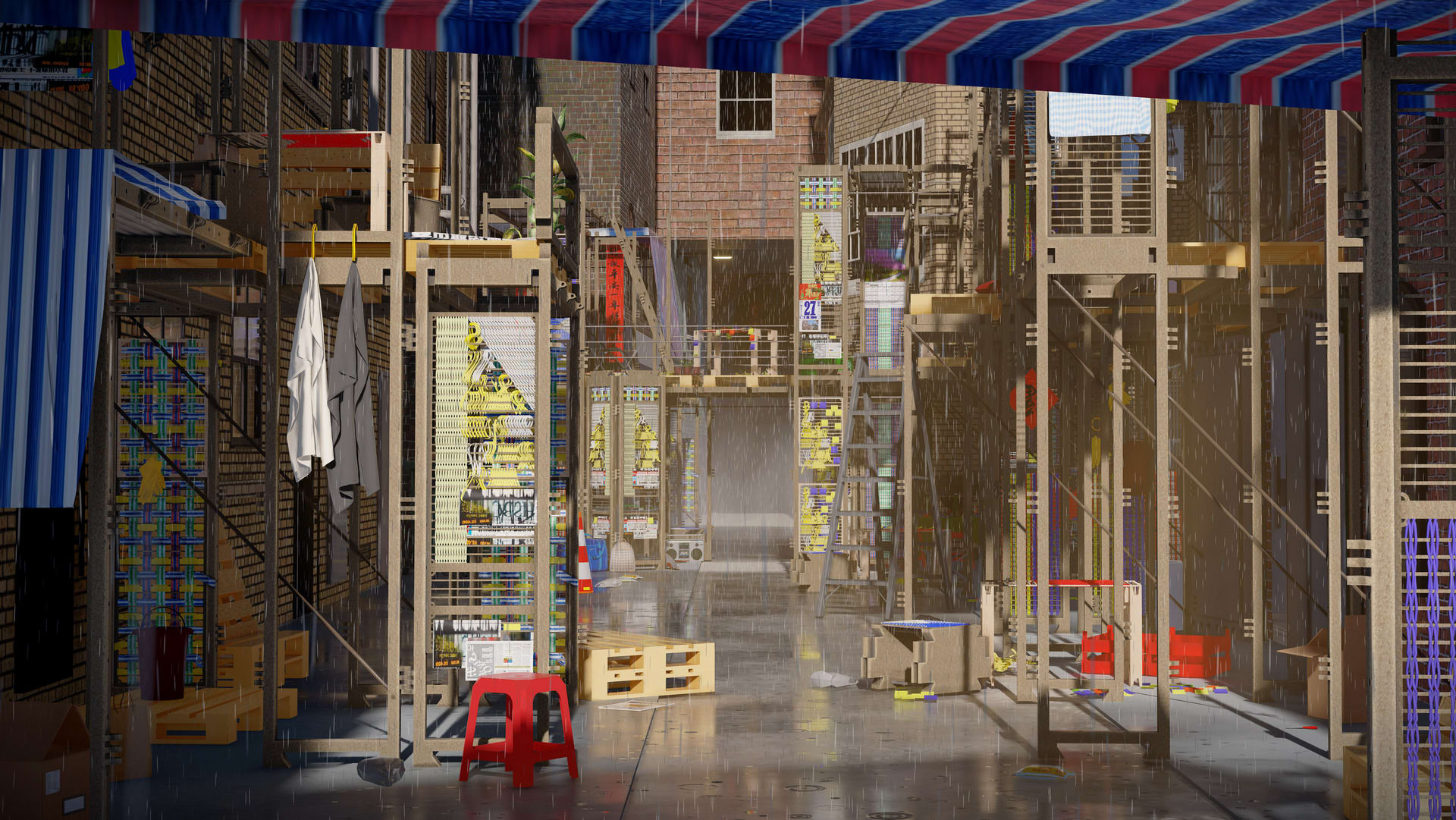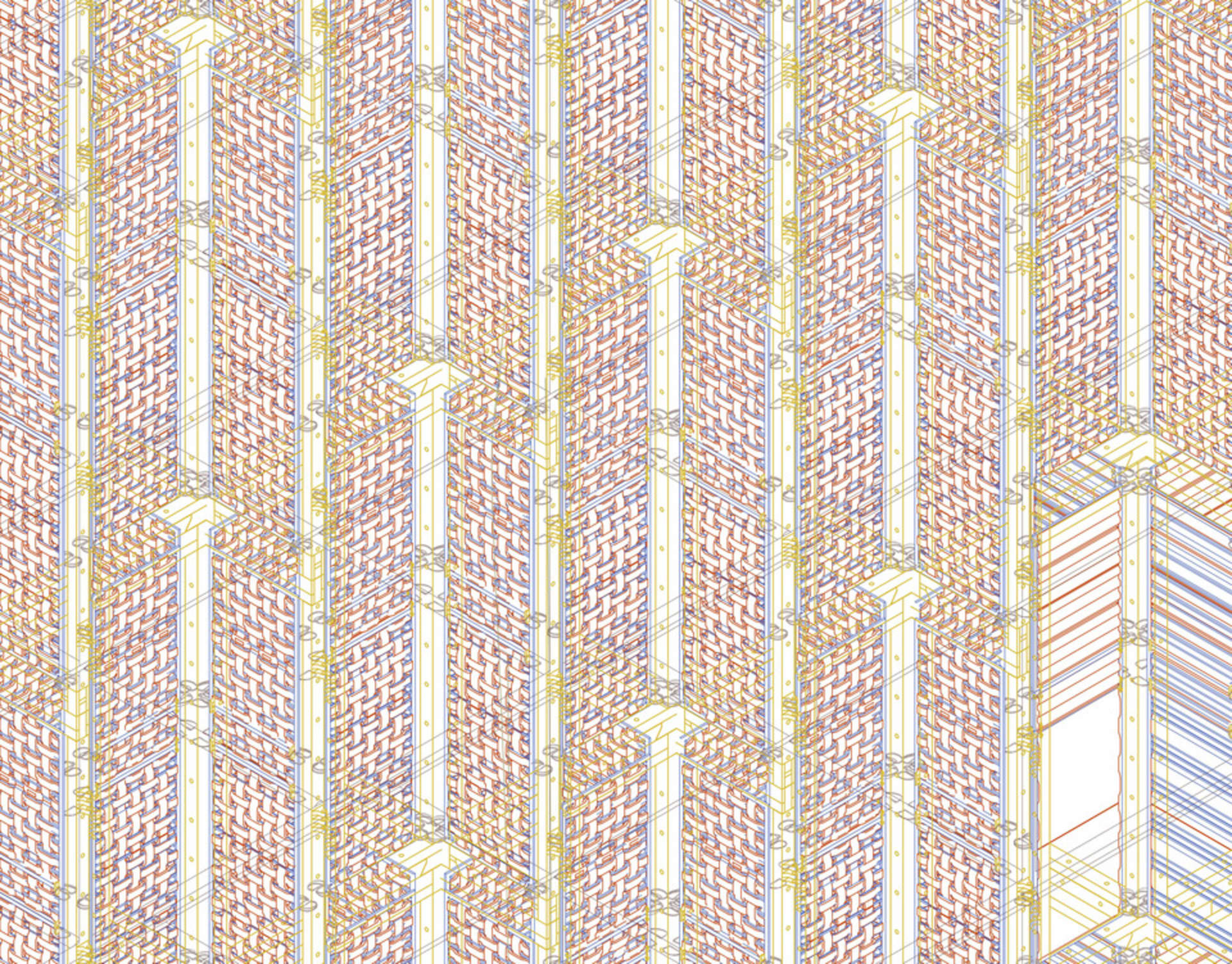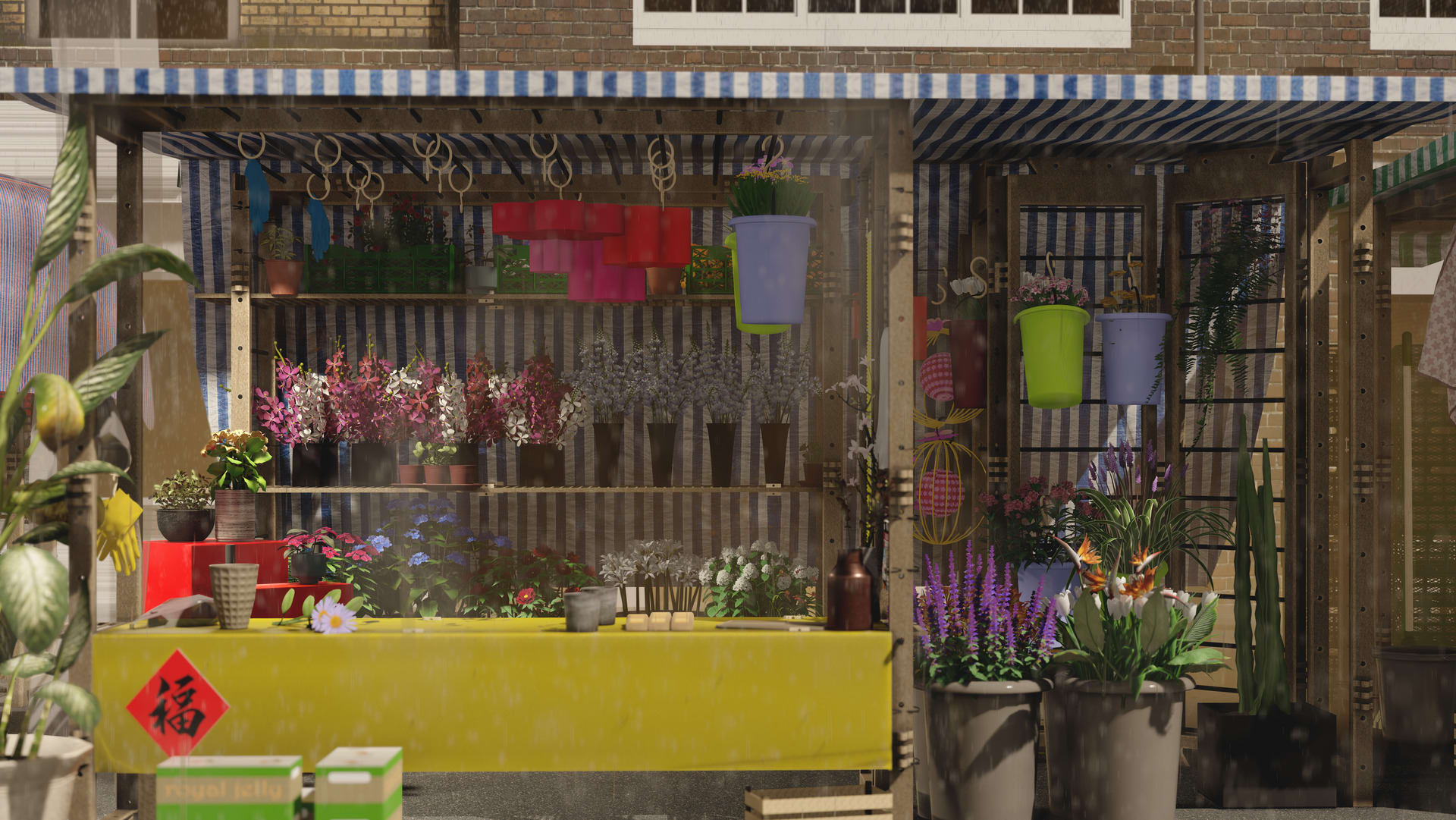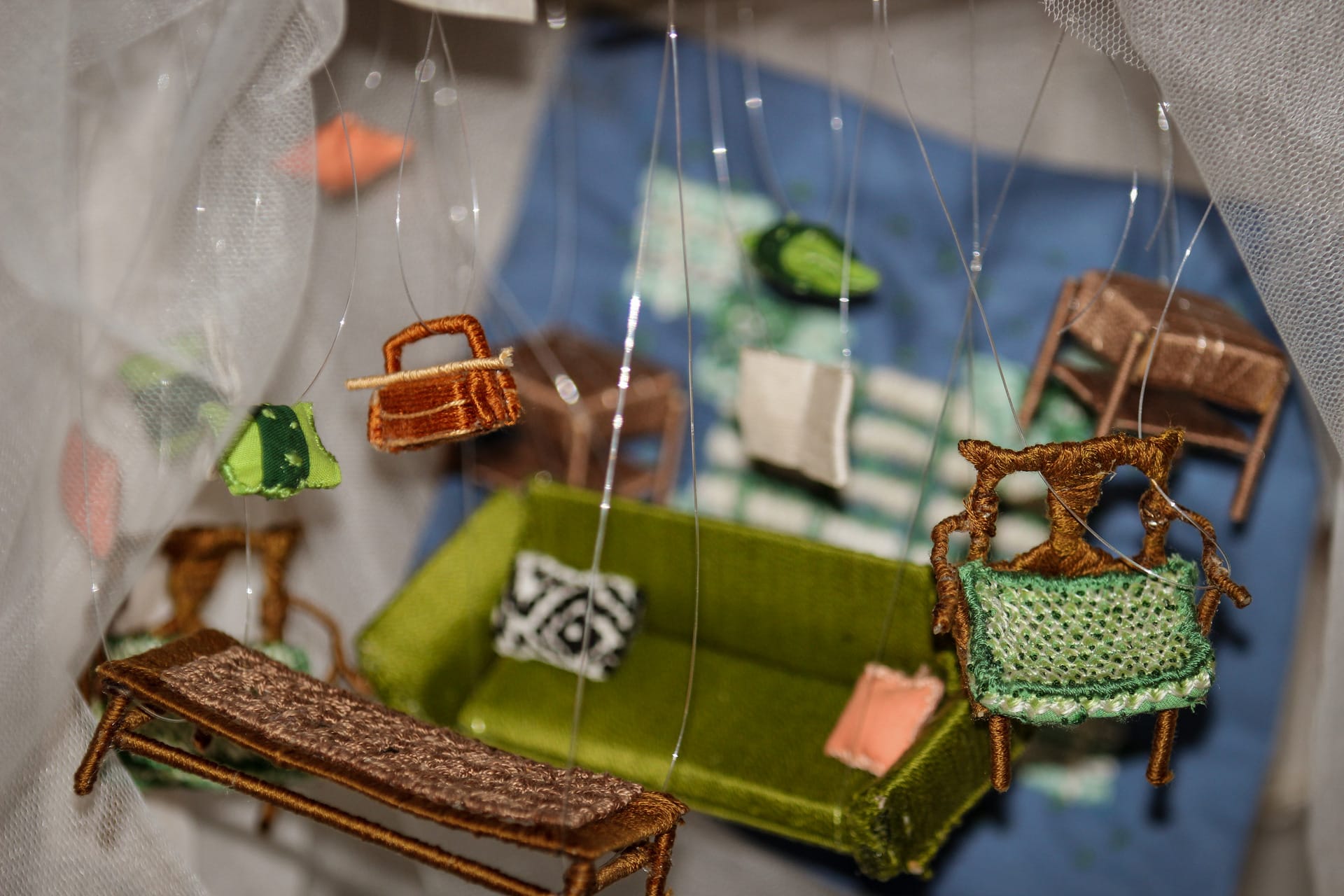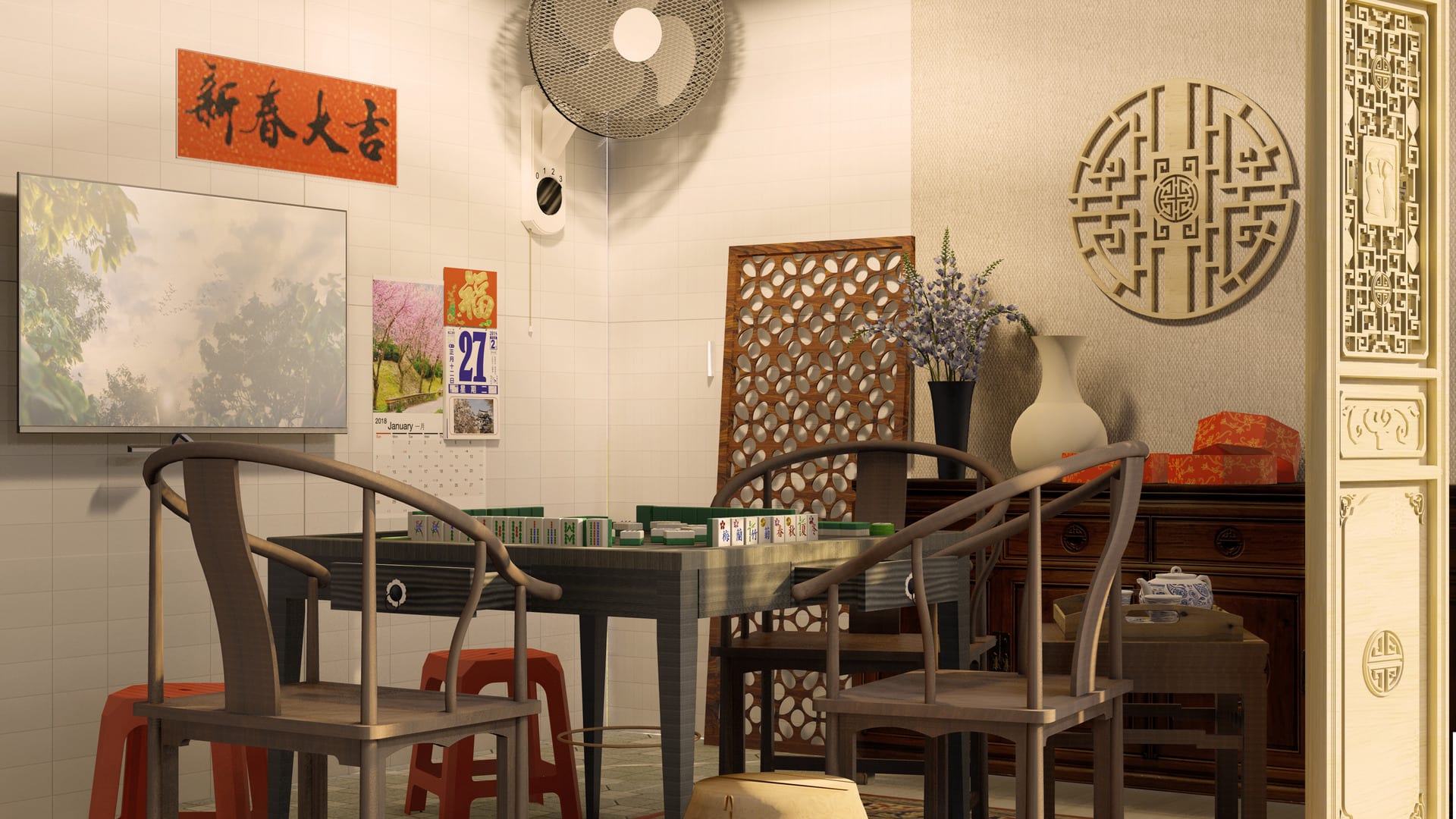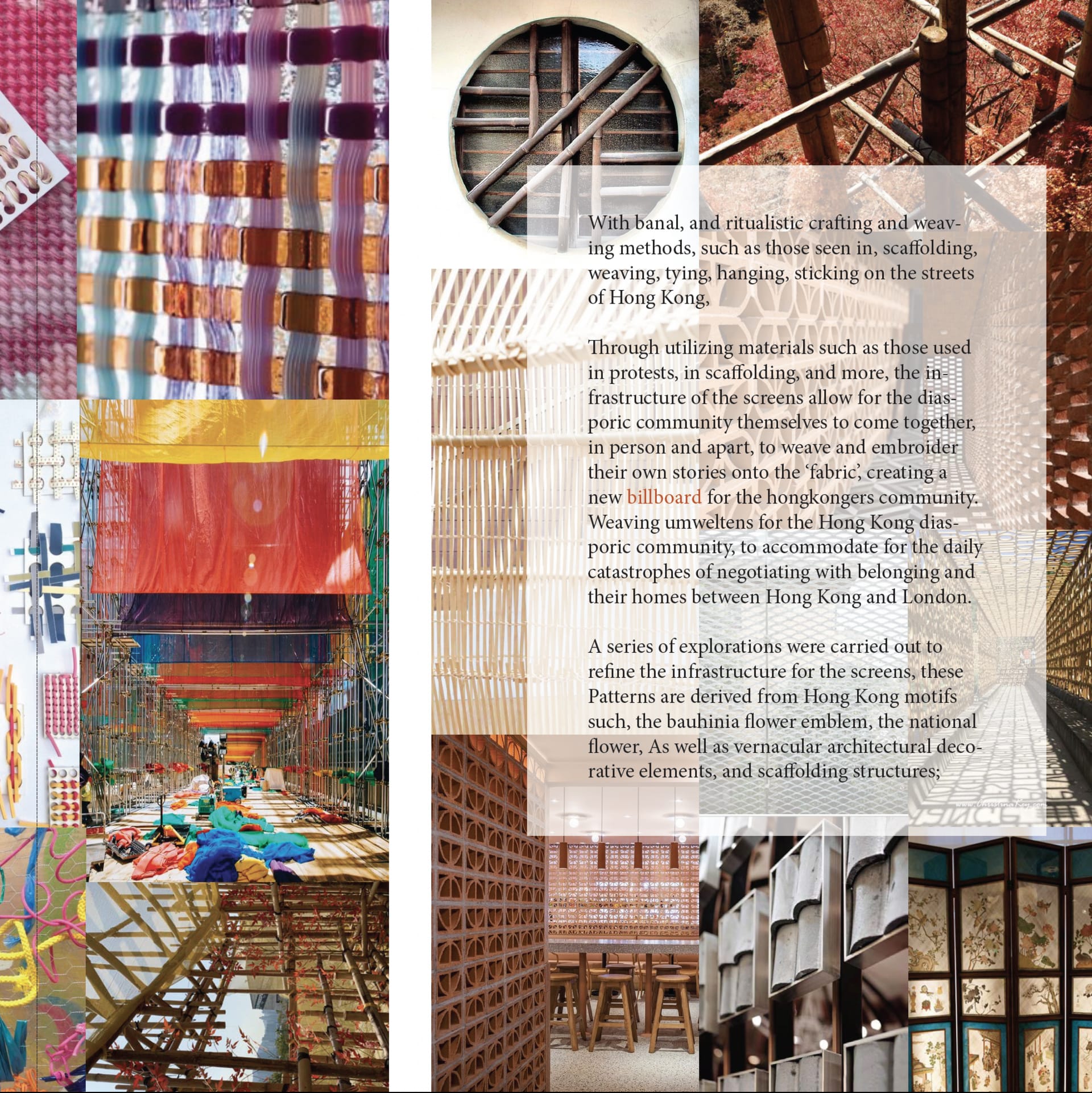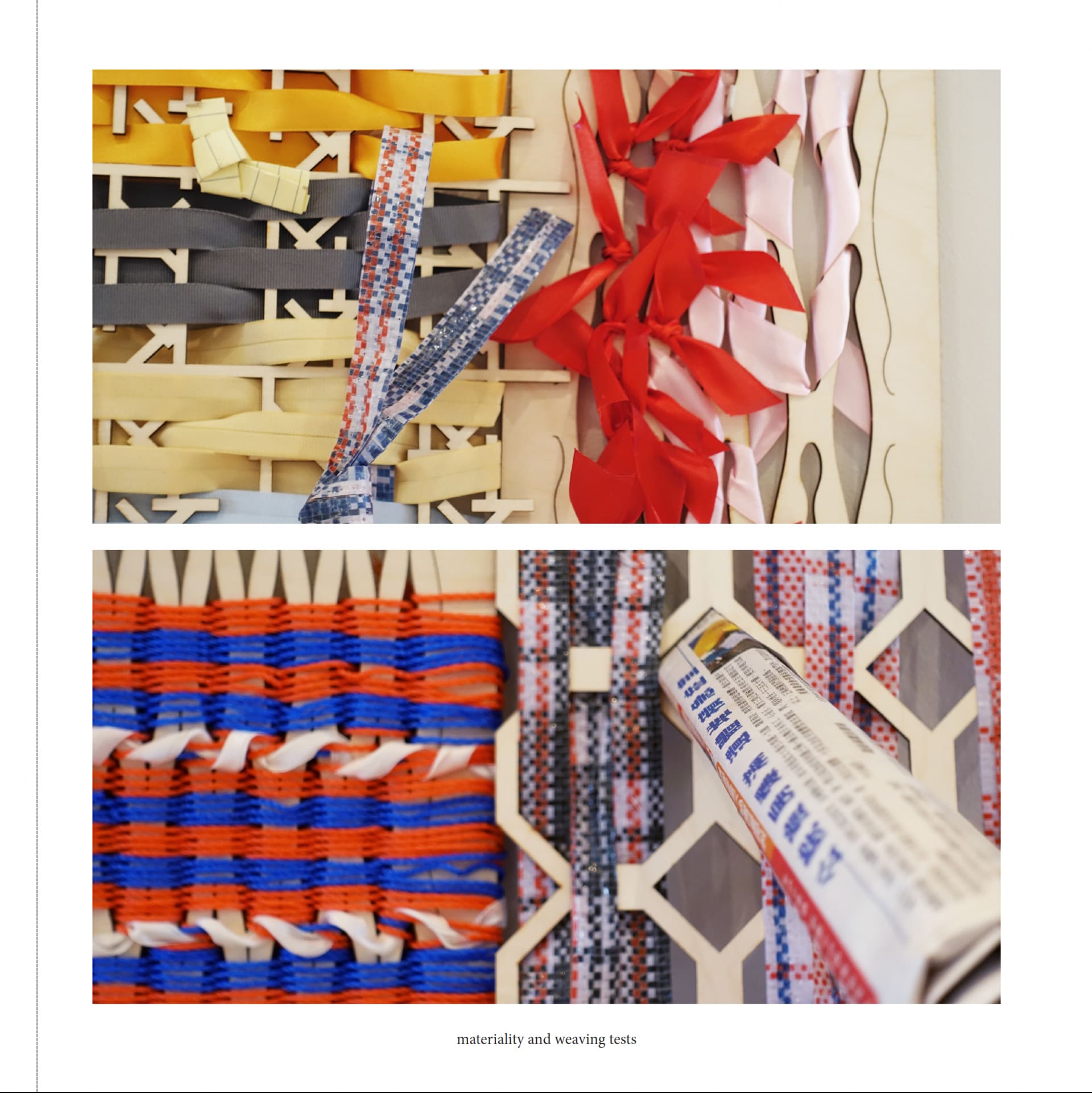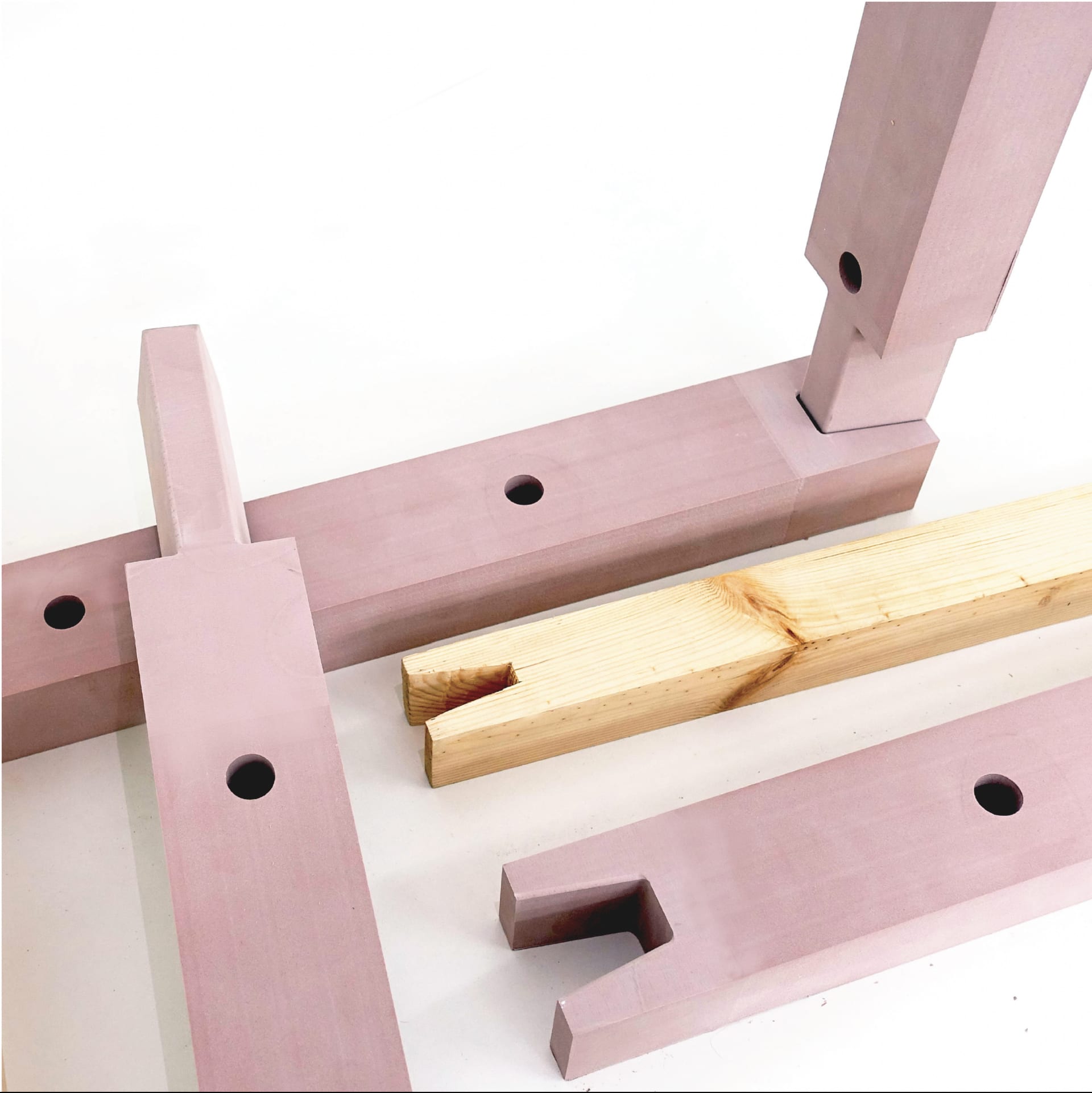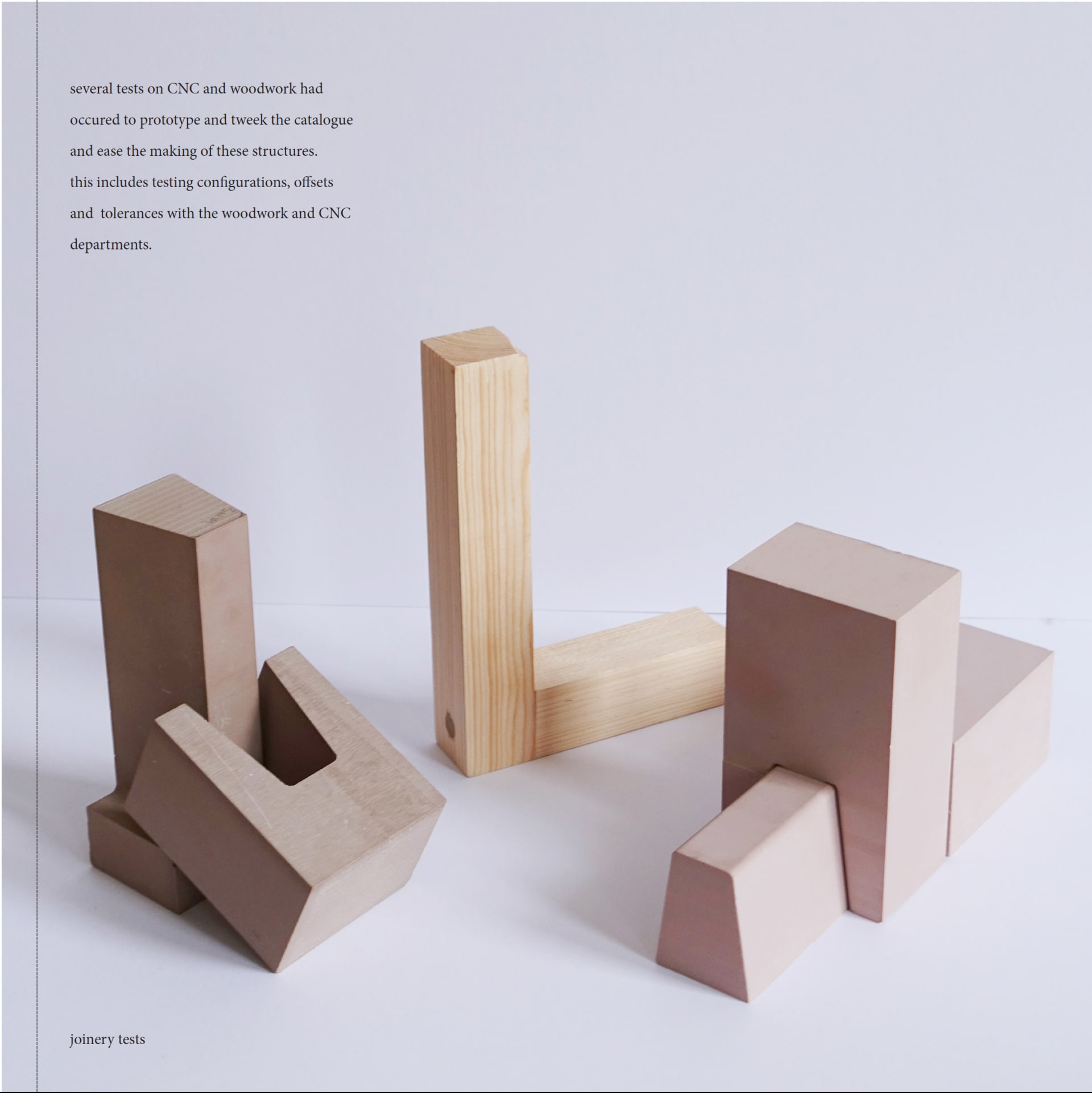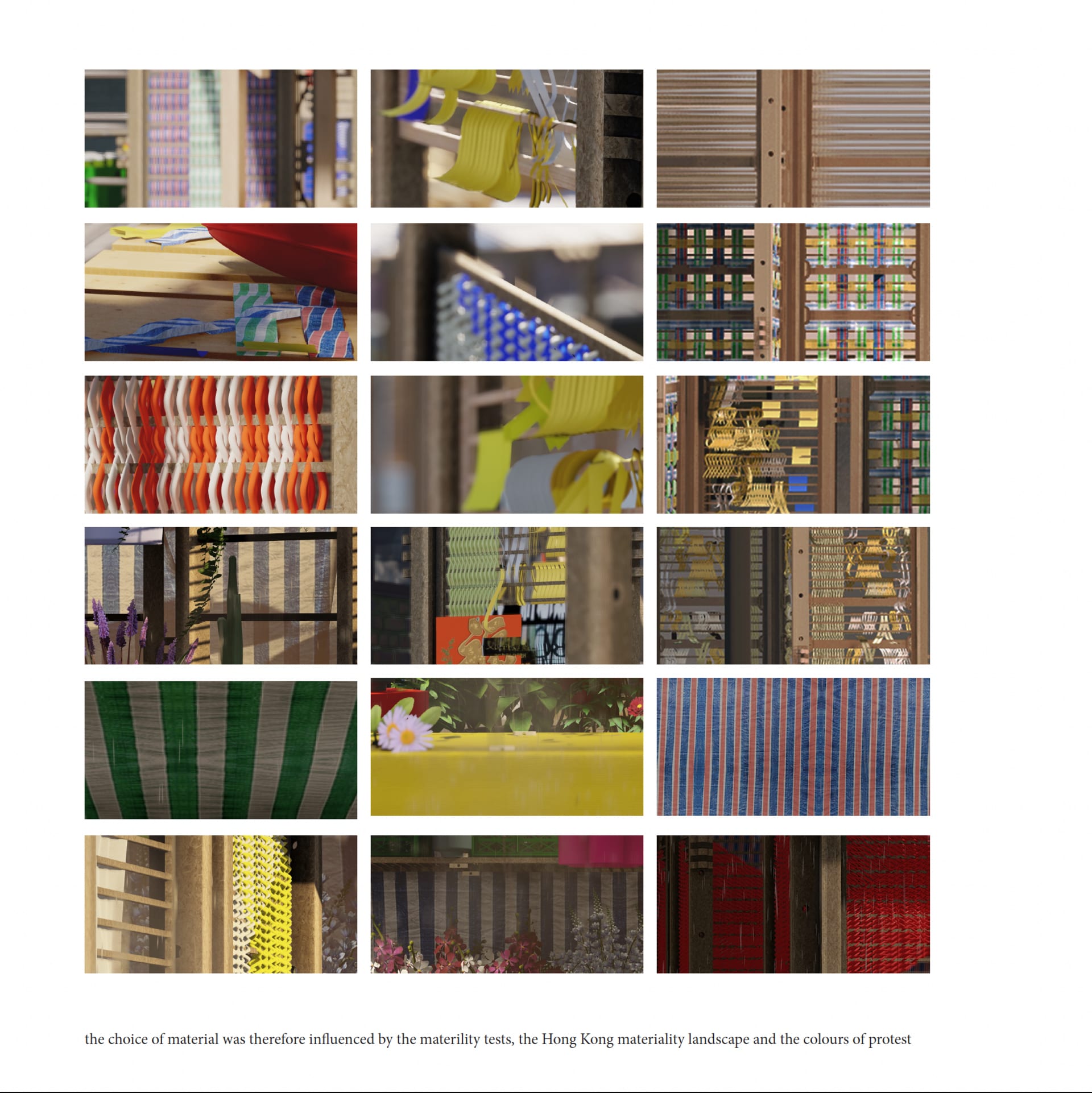Ginny's work critically engages with architecture and spatial experiences that allow the audience to negotiate between their own senses of belonging, identity, and collective memory. Exploring the interactions and relationships between one's sense of space and place, enabling spaces that are personal and personalized to each individual, subverting the existing preconditioned spaces of inhabitation.
Autobiographical ethnographic material, coupled with theoretical research and exploration on collectivity is a common thread in her projects. These research topics are derived from her ongoing experience of migration from Hong Kong to London, during her time at the RCA. Hence, as an extension to her dissertation "Rebuilding the home and self-identity, displaced in the 21st Century." Now at ADS 0, her project "Embroidering Belonging, Homing the Borrowed Space." Looks at facilitating these moments, offering ways of engagement for the diasporic community to renegotiate with their new places of belonging.
